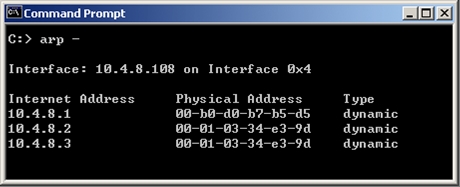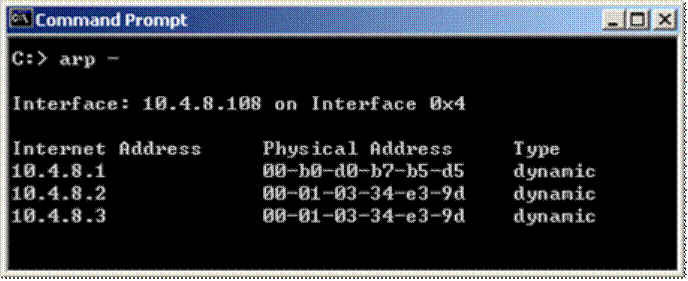Check Point 156-915.77 Check Point Certified Security Expert Update Blade Online Training
Check Point 156-915.77 Online Training
The questions for 156-915.77 were last updated at Aug 18,2025.
- Exam Code: 156-915.77
- Exam Name: Check Point Certified Security Expert Update Blade
- Certification Provider: Check Point
- Latest update: Aug 18,2025
What cluster mode is represented in this case?
![]()
- A . 3rd party cluster
- B . Load Sharing (multicast mode)
- C . Load Sharing Unicast (Pivot) mode
- D . HA (New mode)
Which of the listed load-balancing methods is NOT valid?
- A . Random
- B . Domain
- C . They are all valid
- D . Round Trip
Which method of load balancing describes "Round Robin"?
- A . Assigns service requests to the next server in a series.
- B . Assigns service requests to servers at random.
- C . Measures the load on each server to determine which server has the most available resources.
- D . Ensures that incoming requests are handled by the server with the fastest response time.
In New Mode HA, the internal cluster IP VIP address is 10.4.8.3. The internal interfaces on two members are 10.4.8.1 and 10.4.8.2. Internal host 10.4.8.108 Pings 10.4.8.3, and receives replies.

Review the ARP table from the internal Windows host 10.4.8.108. According to the output, which member is the standby machine?
- A . 10.4.8.3
- B . The standby machine cannot be determined by this test.
- C . 10.4.8.1
- D . 10.4.8.2
In New Mode HA, the internal cluster IP VIP address is 10.4.8.3. An internal host 10.4.8.108 successfully pings its Cluster and receives replies. Review the ARP table from the internal Windows host 10.4.8.108.
Based on this information, what is the active cluster member’s IP address?

- A . The active cluster member’s IP address cannot be determined by this ARP cache.
- B . 10.4.8.3
- C . 10.4.8.1
- D . 10.4.8.2
State Synchronization is enabled on both members in a cluster, and the Security Policy is successfully installed. No protocols or services have been unselected for selective sync. Review the fw tab -t connections -s output from both members.

Is State Synchronization working properly between the two members?
- A . Members A and B are not synchronized, because #VALS in the connections table are not close.
- B . Members A and B are not synchronized, because #PEAK for both members is not close in the connections table.
- C . Members A and B are synchronized, because #SLINKS are identical in the connections table.
- D . Members A and B are synchronized, because ID for both members is identical in the connections table.
You have two IP Appliances: one IP565 and one IP395. Both appliances have IPSO 6.2 and R76 installed in a distributed deployment.
Can they be members of a Gateway Cluster?
- A . No, because the Security Gateways must be installed in a stand-alone installation.
- B . No, because IP does not have a cluster option.
- C . Yes, as long as they have the same IPSO and Check Point versions.
- D . No, because the appliances must be of the same model (both should be IP565 or IP395).
You have two IP Appliances: one IP565 and one IP395. Both appliances have IPSO 6.2 and R76 installed in a distributed deployment.
Can they be members of a Gateway Cluster?
- A . No, because the Security Gateways must be installed in a stand-alone installation.
- B . No, because IP does not have a cluster option.
- C . Yes, as long as they have the same IPSO and Check Point versions.
- D . No, because the appliances must be of the same model (both should be IP565 or IP395).
You have two IP Appliances: one IP565 and one IP395. Both appliances have IPSO 6.2 and R76 installed in a distributed deployment.
Can they be members of a Gateway Cluster?
- A . No, because the Security Gateways must be installed in a stand-alone installation.
- B . No, because IP does not have a cluster option.
- C . Yes, as long as they have the same IPSO and Check Point versions.
- D . No, because the appliances must be of the same model (both should be IP565 or IP395).
You have two IP Appliances: one IP565 and one IP395. Both appliances have IPSO 6.2 and R76 installed in a distributed deployment.
Can they be members of a Gateway Cluster?
- A . No, because the Security Gateways must be installed in a stand-alone installation.
- B . No, because IP does not have a cluster option.
- C . Yes, as long as they have the same IPSO and Check Point versions.
- D . No, because the appliances must be of the same model (both should be IP565 or IP395).
Latest 156-915.77 Dumps Valid Version with 846 Q&As
Latest And Valid Q&A | Instant Download | Once Fail, Full Refund

